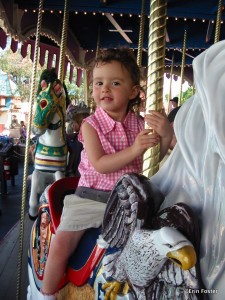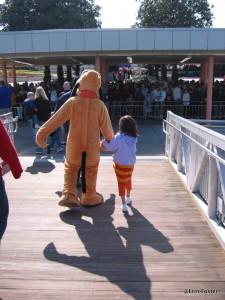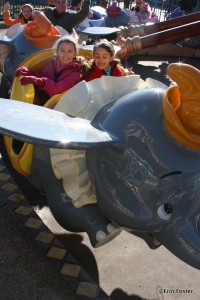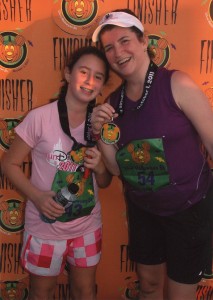You can’t bring your baby to Walt Disney World! You get the cutest photos when you bring your baby to Walt Disney World! It’s too hard to travel with a toddler! My preschooler won’t remember the trip! Kindergarten is the best time for a Disney visit! Don’t go until your child’s tall enough for ALL the rides! Middle schoolers are too jaded for Disney! Teens have nothing to do in the parks! There’s no reason to go to Walt Disney World if you don’t have kids! Only adults can appreciate all the dining opportunities at Disney World!
Any frequent Disney visitor has heard (and maybe participated in) vehement arguments about why a certain age is the best or worst time to visit Walt Disney World. What is the right age for a Disney World vacation? How do I decide?
As a person who’s been to Disney as a child, a young adult single, a young adult married, and as a parent of infants on up to young adults, I’ve lived the gamut of pros and cons of Disney travel at various life stages.
Let’s break it down:
Travel with an Infant
- Pros:
- Free admission for the child! Never underestimate the benefit of free park admission.
- They’re portable. They’ll keep to your itinerary with no complaints.
- Everything is new and interesting to them.
- Nap requirements force you to take a break during the day.
- Photo ops are extra cute.
- If the infant sleeps in a Pack ‘n Play crib, they don’t count toward the total guest count in your room – a potential cost savings for families of five or more.
- Cons:
- They won’t remember the trip.
- They’re too short for many rides.
- Some attractions have height requirements, forcing an adult to stay behind and watch the baby.
- You need to tote extra supplies: diapers, wipes, bottles, etc.
- Nap requirements force you to take a break during the day.
- Small children will potentially be exposed to the many germs present in a high density location.
Travel with a Toddler (ages 1-2)
- Pros:
- Free admission!
- They’ll likely “believe in” Mickey and friends.
- They can express preferences about what they like. You’ll see real joy when they’re happy.
- You can keep them safe/contained in a stroller during crowd situations.
- Several attractions are made with toddlers in mind.
- They’re easily entertained by the little things: ducks, giant lollipops, seeing a character.
- Lots of kid-friendly food options.
- Nap requirements force you to take a break during the day.

- Cons:
- They won’t remember the trip.
- Some attractions have height requirements, forcing an adult to stay behind and watch the toddler.
- You need to tote extra supplies: diapers/pullups, wipes, bottles/favorite snacks, etc.
- Nap requirements force you to take a break during the day.
- Potty training may make bathroom issues a priority.
- Possible fear issues with characters.
- Possible rebellion against the stroller.
- Minimal patience for waiting in lines.
- Too short for many rides.
- Needs watchful water supervision.
Travel with a Preschooler (ages 3-5)
- Pros:
- Pays child (not adult) admission fee and dining rates.
- Will likely “believe in” Mickey and friends.
- Often totally immersed in the experience. There’s no I’m “too cool” attitude.
- Can walk some on their own, but you still have the stroller for breaks or to stow your gear.
- Lots of child-friendly food options.
- Cons:
- Possibly won’t remember the trip.
- Possibly fearful of some experiences.
- Not yet tall enough for some rides.
- Needs watchful supervision in the water.

Travel with a Younger Elementary Schooler (ages 6-9)
- Pros:
- Pays child (not adult) admission fee and dining rates.
- They’ll likely remember much of the trip.
- They’ll have stamina for a full day.
- Most rides are accessible to them.
- They’re unlikely to be jaded about the Disney experience.
- They can assist with the planning.
- They’re usually past the fear factor.
- Age 7+ may be able to go on some objectionable rides without you (Teacups?).
- Cons:
- School may limit travel dates.
- Too old for stroller, but possibly still easily tired.
- Perhaps still too short for some rides.
Travel with an Older Elementary Schooler or Middle Schooler (ages 10-13)

- Pros:
- Will likely be tall enough for every attraction.
- Generally safe in water situations at pools and water parks.
- They can assist with the planning.
- Generally able to occupy themselves in lines.
- Will often enjoy some of the more educational attractions at Epcot.
- Easy to dine at signature restaurants with them.
- Might be possible to leave them alone in your hotel room for a few minutes.
- Cons:
- Older children pay adult ticket prices.
- Travel may have to be in peak season to avoid taking them out of school.
- May be unwilling to share a bed with a sibling, making a larger room necessary.
Travel with a High Schooler (ages 14-18)
- Pros:
- They can enjoy many of the attractions on their own.
- They may be able to participate in backstage tours with you. (These are paused during COVID.)
- Easy to dine at signature restaurants.
- Easy to stay up late for evening activities and events.
- Ample free transportation means they can come and go at will, pending your permission.

- Cons:
- May think they’re “too cool” for a kiddie vacation.
- Sleep schedules not optimal for rope-drop touring.
- Possibly expensive to feed hungry appetites.
- May be unwilling to share a bed with a sibling, making a larger room necessary.
- Travel may have to be in peak season to avoid taking them out of school.
Travel as a Young Childless Adult
- Pros:
- You can experience everything at your own pace.
- Nothing is off limits.
- You can travel light. No diaper bags or extra gear to tote.
- There are plenty of opportunities for romance.
- Cons:
- Some attractions may be better seen through the eyes of a child.
- Possible awkwardness about hanging out with Mickey with no child in tow.
- Disney is expensive. Budget may be an issue on a new worker’s salary.
- Difficult to avoid children if you want quiet time.
- Nightlife scene is relatively limited.
Travel while Pregnant
- Pros:
- Disney is a comfortable place for travel while pregnant. There are plenty of clean restrooms and nearby medical assistance.
- There’s plenty to see/do while taking it easy (shows, spas, etc.). (Some of these experiences are paused during COVID.)
- Cute photo opportunities of Junior with Mickey before birth.
- Cons:
- Heat and walking require substantial stamina.
- Some rides must be avoided due to intense motion.
- You’re away from your own medical team.
Travel as Senior
- Pros:
- A flexible schedule makes it easy to visit when crowds are low.
- Disney is very accommodating for guests with medical challenges.
- Spur of the moment trips more possible.
- Can see the joy in a grandchild’s eyes at WDW.
- Cons:
- Heat and walking require substantial stamina.
- Difficult to find quieter places without children.
- Intense rides may exacerbate medical conditions.
Obviously there are good and bad aspects to Walt Disney World travel at any age or stage. For me, there’s no right time to go. Or to put it differently, there are many right times to go. I loved my Disney visits when my kids were toddlers and I love them now when they’re young adults – even though the trips themselves are entirely different.
What have you found to be the “sweet spot” for Disney travel? Are there advantages or disadvantages that I missed? How have you coped with family members at different life stages traveling together? Let us know in the comments below.
The post What’s the Right Age for a Disney World Visit? appeared first on TouringPlans.com Blog.


